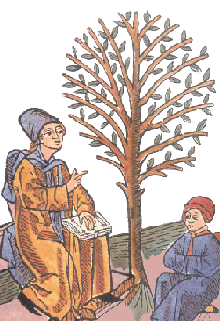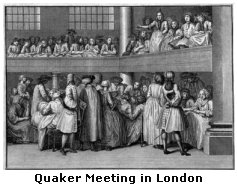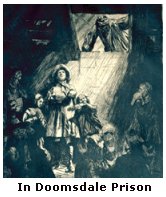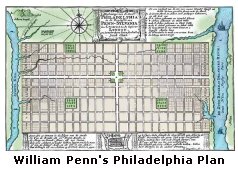
|
Illuminations, Epiphanies, & Reflections
Family
Trees
The
Parsons
English Roots
Parsons is an old English name that has been traced
back to the time of the crusades. Some have suggested that it
is
probably Norman in origin,
having been
derived from "Pierreson," or
"the son of Pierre."

The
earliest written record of the name was made in 1286, when
Sir John
Parsons of Cuddingham was awarded armorial bearings consisting of a
leopard's head between three crosses, the crosses indicating that he,
personally, had been a Crusader. The traditional Parsons arms
have since bore three leopards heads.
[I
received a note from a gentleman in California, who believes that some
of the information below is incorrect and that Thomas Parsons Senior is
not the same person as Thomas Parsons (2). He believes that Thomas (2)
was born in Philadelphia around 1688 after his parents arrived there in
1686 and that Thomas Parsons Senior emigrated directly from England to
America in the mid-1700s. His reasoning makes sense and may well
be correct, but to be honest, I'm not interested enough to do any
additional research and report the results. However, if you are a
serious genealogist--as opposed to a putterer like me--and if you are
constructing a formal genealogical record of this particular Parsons
branch, you should ensure you have physical documents to support all of
your entries and not simply copy undocumented information you find in
somebody's (my) 'for fun' twenty-plus-year-old website that may or may
not be correct . . . but then, you already know that.]
Possibly with some effort, a connection from this John Parsons
could be made to the chain of John Parson's that are linked to
this tree. But then again, maybe not. Some have
suggested
that the family is derived through a Prussian who allegedly landed on
Maryland's Eastern Shore in 1625, other
researchers
believe that the
family descended from a line of "Parsonage"s who can be traced to a
Roger (or George) Parsonage of Middlezoy,
Somersetshire, who was born around 1530. Roger (or George)
Parsonage apparently sired a son, John
(1), born around 1555, who in turn sired a son, born around 1590, whom
he also named John (2). At this time the surname appears to have been
shortened to Parsons. John (2) also had a son around 1630
whom he
named John (3).
Sometime in the mid-1600s, John (3) Parsons
and his wife,  Florence,
became early followers of George Fox and his particular brand of
religious dissention. Although Fox never intended to
establish a
formal denomination, his follower's became known as Friends, and his
denomination became known as the Religious Society of Friends, or
Quakers. The Friends were persecuted by both Oliver Cromwell
and,
upon the restoration of the monarchy, Charles II. To thwart
possible attempts by the Catholic supporters of the Stuarts to
overthrow the thrown, Parliament passed the Conventicle Act, which
classified religious dissent as sedition. Interestingly,
while
only occasionally applied against
Catholics in
England, the
law was used to wreak havoc
upon the Quakers, and thousands Florence,
became early followers of George Fox and his particular brand of
religious dissention. Although Fox never intended to
establish a
formal denomination, his follower's became known as Friends, and his
denomination became known as the Religious Society of Friends, or
Quakers. The Friends were persecuted by both Oliver Cromwell
and,
upon the restoration of the monarchy, Charles II. To thwart
possible attempts by the Catholic supporters of the Stuarts to
overthrow the thrown, Parliament passed the Conventicle Act, which
classified religious dissent as sedition. Interestingly,
while
only occasionally applied against
Catholics in
England, the
law was used to wreak havoc
upon the Quakers, and thousands were
imprisoned for
their religious
beliefs. John (3) was
no
exception. He was fined for refusing to tithe to the
Church of
England in 1670 and jailed for the same offense in 1675. In
1684,
he was imprisoned once more. During this imprisonment, he
joined
six other Quakers in a famous petition to the Judges of Assizes
that pointed out the injustice of punishing people for holding
religious
meetings. were
imprisoned for
their religious
beliefs. John (3) was
no
exception. He was fined for refusing to tithe to the
Church of
England in 1670 and jailed for the same offense in 1675. In
1684,
he was imprisoned once more. During this imprisonment, he
joined
six other Quakers in a famous petition to the Judges of Assizes
that pointed out the injustice of punishing people for holding
religious
meetings.
John's sons, another John (4) and Thomas (1), born around 1663, were
Quakers as
well. Like his father, Thomas (1) was imprisoned in 1685 for
attending a meeting of Friends in Ilchester County.
Immediately
upon his release, Thomas (1) and his wife, Jane (or Jeane) Culling
sailed for America and were in
style="font-size: 10pt; font-family: Verdana;"> Philadelphia
by April
1686. While
family lore, has them--along with his brother and his wife--making the
trip with William Penn on the
"Welcome,"
that is impossible as the
Welcome sailed in 1682. Penn on the
"Welcome,"
that is impossible as the
Welcome sailed in 1682.
Thomas (1) had, as had many Quakers, purchased a "liberty lot" from
William Penn. In addition to a small Philadelphia "town lot,"
the
liberty lot also included a much larger tract of rural land.
A
carpenter by trade, Thomas (1) sold his town lot and moved to his rural
land in Bucks County where he built a homestead. Upon his death in
1721, his son, Thomas (2) sold his inheritance and moved west to
Virginia.
|
|
|
|

